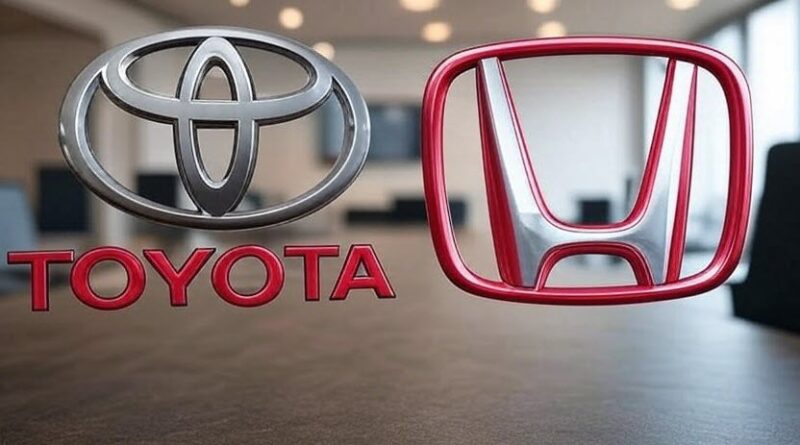Toyota and Honda Profit Falls as U.S. Tariffs Hit
Two of Japan’s largest automakers, Toyota and Honda, are preparing investors for significant drops in profits due to newly imposed U.S. import tariffs and the strong Japanese yen. Both companies have faced increased financial pressure, forcing them to rethink production strategies and pricing models. Here’s what investors and consumers need to know about the challenging landscape for these automotive giants. Toyota and Honda profit fall why?
U.S. Import Tariffs Hit Margins
Recently introduced tariffs on vehicles imported into the United States have significantly affected Toyota and Honda. Although these tariffs were reduced from a previous combined rate of around 27.5% to approximately 15%, this still represents a substantial cost for automakers. Rather than passing these costs directly to consumers and risking lower sales, both Toyota and Honda have chosen to absorb much of the tariff expense, resulting in tighter profit margins.
The Strong Yen Adds Pressure
In addition to tariffs, the Japanese yen has strengthened significantly against the U.S. dollar. A stronger yen decreases the value of earnings that companies generate overseas once those earnings are converted back into yen, directly impacting profitability for companies like Toyota and Honda, which heavily rely on the U.S. market.
Projected Profit Declines for the Quarter
Toyota’s Profit Outlook
Toyota expects its operating profits for the current quarter to fall by approximately 31%, to around ¥902 billion (about $6.14 billion). This would be Toyota’s weakest quarterly result in more than two years, highlighting the severity of the tariff and currency impact.
Honda Faces Similar Struggles
Honda forecasts an even sharper profit decline of around 36% this quarter, down to about ¥311.7 billion. The company previously warned investors to expect a full-year net profit decline of up to 59% compared to last year.
How Toyota and Honda are Responding
Shifting Production to the U.S.
To minimize tariff impacts, Honda plans to significantly increase production at its manufacturing facilities in the U.S., particularly at its plant in Ohio. Producing vehicles domestically allows Honda to avoid tariffs altogether and potentially improve profit margins.
Toyota, similarly, is reassessing its production strategies in North America to minimize exposure to U.S. tariffs.
Adjusting Pricing Strategies
Toyota and Honda have reduced their export prices to the U.S. by roughly 20% on average, absorbing much of the tariff impact internally rather than transferring the costs to consumers. This move is designed to maintain their competitive position in the American market, even though it negatively affects their profitability in the short term.
Adjusting EV Investment Plans
Honda has announced delays in some of its electric vehicle (EV) investment plans to control costs. The automaker recently reduced its planned investment in full electrification by approximately ¥3 trillion, instead choosing to focus more on hybrid vehicles, which require lower upfront costs.
Impact on Automotive Suppliers and Economy
Toyota’s major supplier, Denso, has also experienced an 11% decline in quarterly profits due to similar pressures. Suppliers across the industry are facing decreased orders and tighter margins, creating broader economic implications for Japan’s auto sector.
The Bank of Japan has expressed concern that sustained pressure from tariffs and a strong yen could lead to delayed investments across the industry, potentially dampening economic growth and slowing wage increases domestically.
U.S. Automakers and Competitive Dynamics
Interestingly, Ford’s CEO has stated that Japanese automakers might still have an advantage due to the relatively lower tariffs compared to the previous higher rate. However, analysts argue the current environment will likely force all companies competing in the U.S. market to reconsider their production locations and supply chain structures carefully.
Summary of Toyota and Honda’s Profit Challenges
| Company | Expected Operating Profit Decline | Key Issues Faced |
|---|---|---|
| Toyota | Around 31% (to ¥902 billion) | U.S. tariffs, strong yen, lower margins |
| Honda | Around 36% (to ¥311.7 billion) | Tariff impacts, yen strength, cost cuts |
| Suppliers | Approx. 11% decline | Reduced orders, margin compression |
What Investors Can Expect Next
Industry analysts believe the current profit pressures may ease somewhat next year if tariffs stabilize or decrease further. However, Toyota and Honda must continue adapting quickly to changing conditions, emphasizing local production, hybrid technology, and flexible pricing strategies.
Investors will closely monitor both automakers’ quarterly guidance, production adjustments, and broader strategic shifts to gauge their future earnings potential accurately.
Buying a used VW. Buying used vauxhall, BMW, Jaguar, Ford, Volvo, Range rover, Bentley, Aston Martin, Porsche, Ferrari, Lamborghini, Maserati, Hyundai, Tesla, Honda, Pagani

